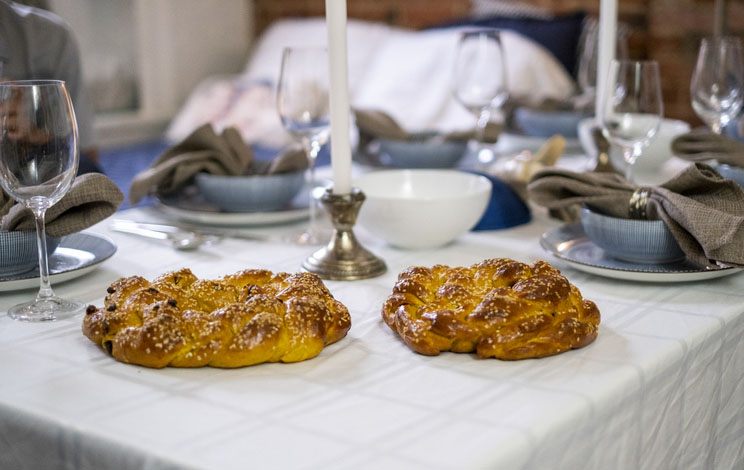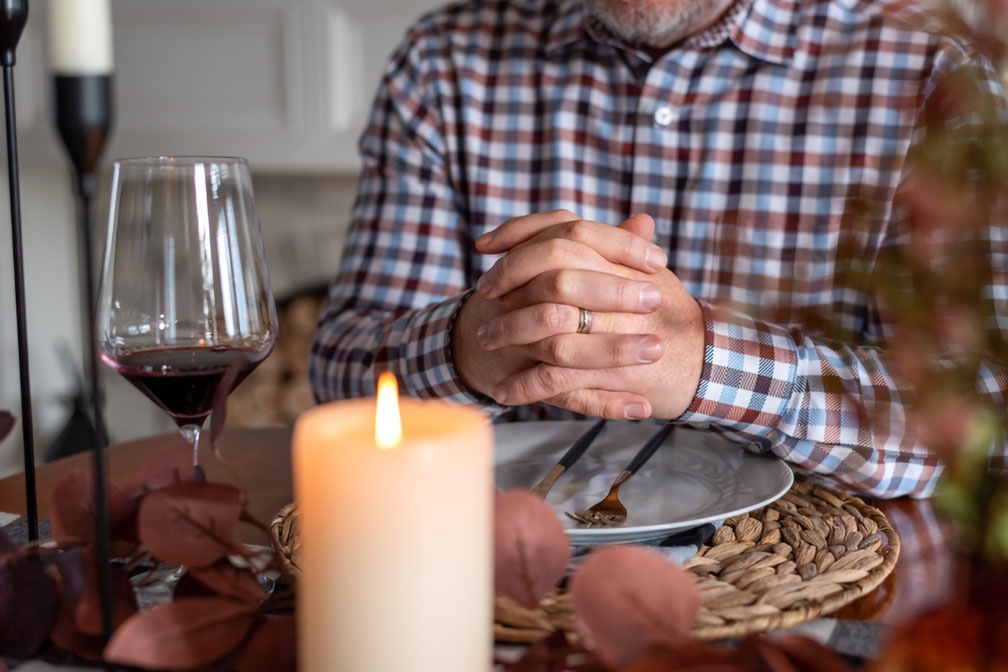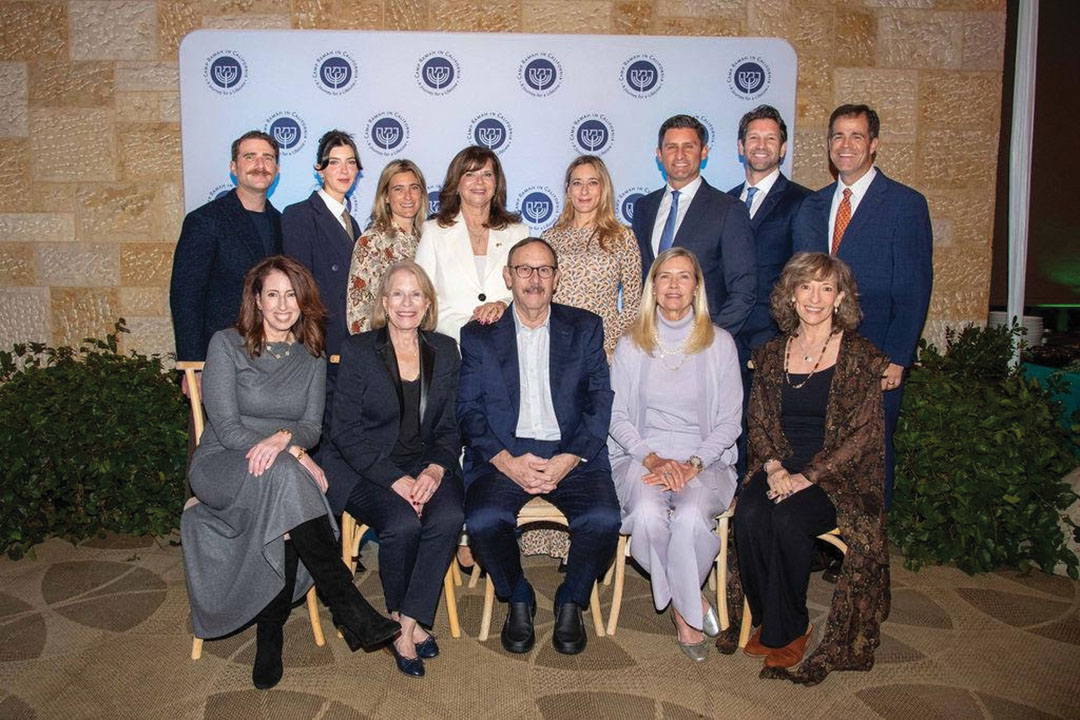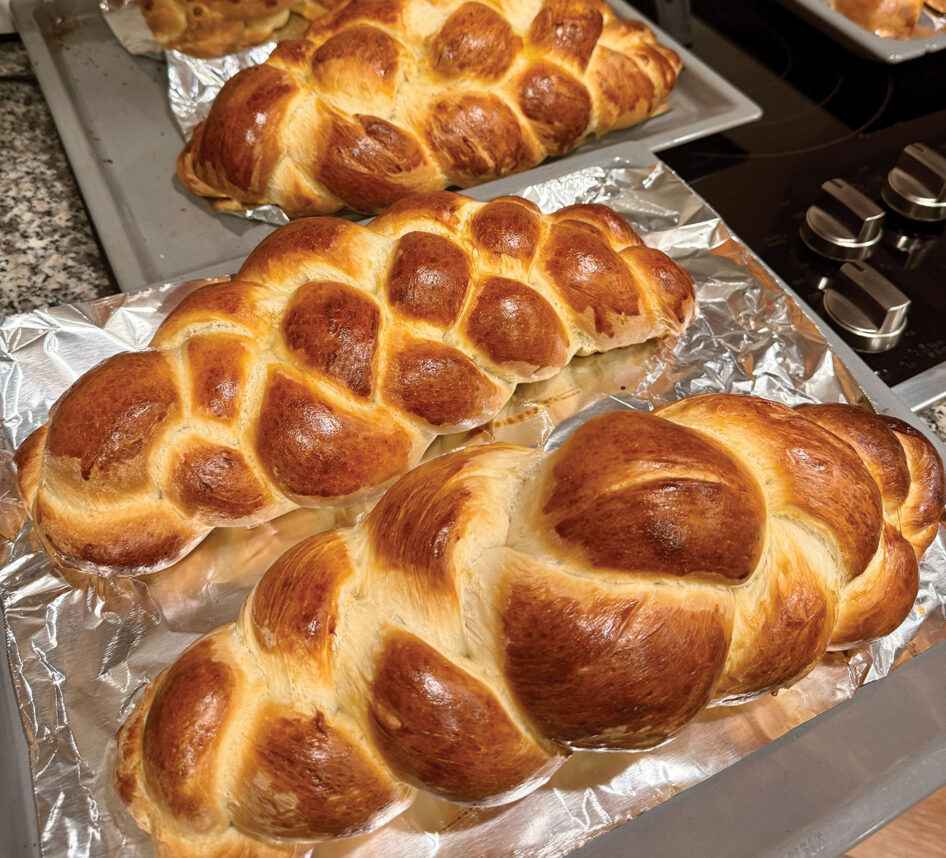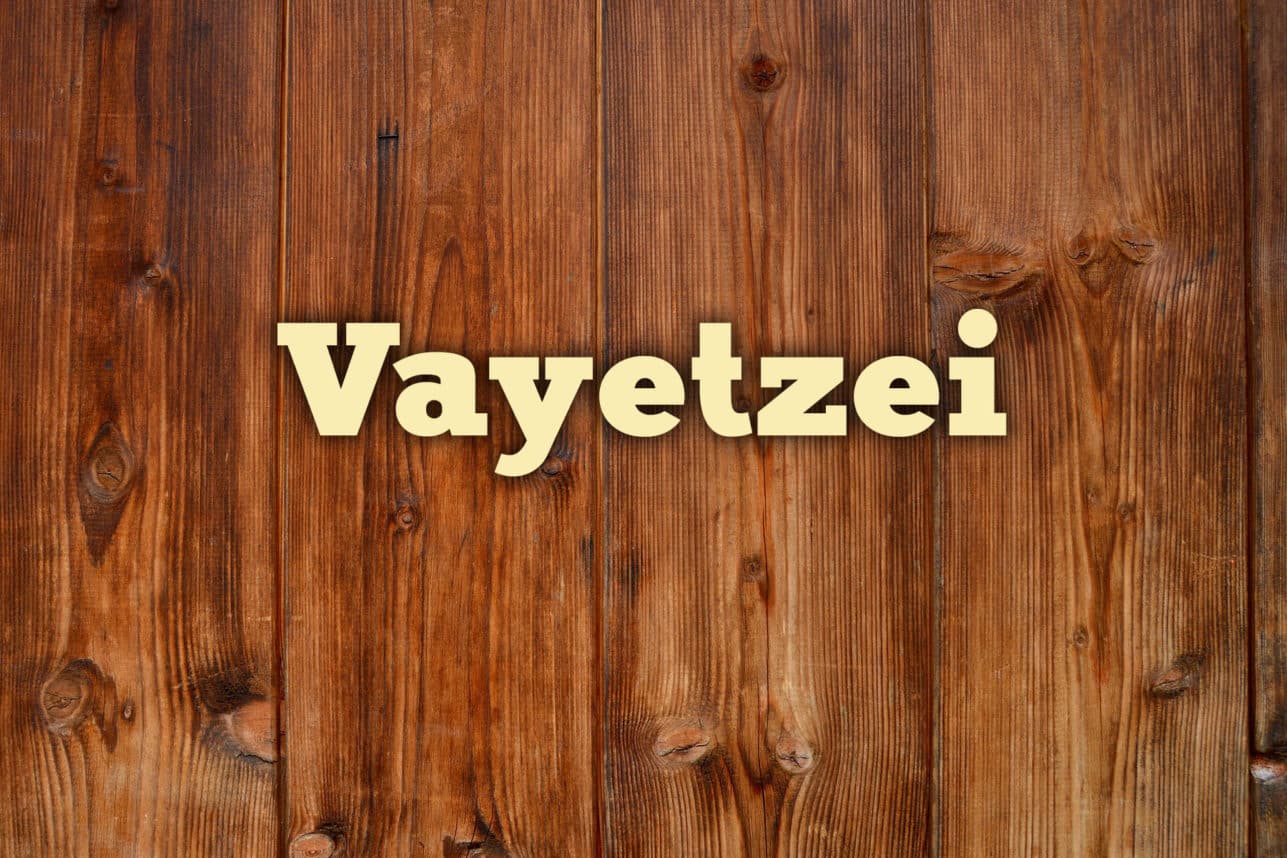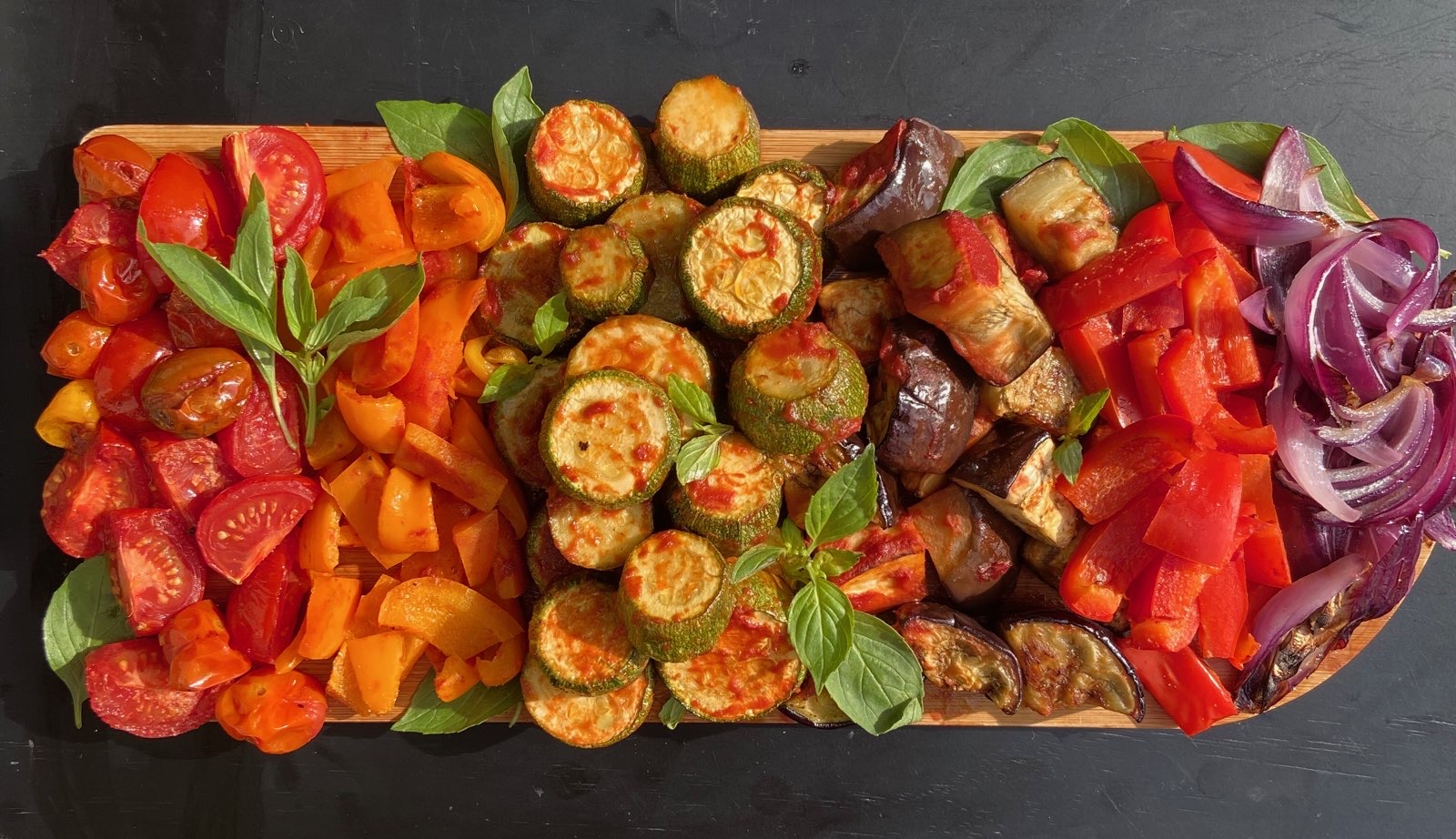
Passover is one of the most cherished dates of the Jewish calendar.
It is a celebration of our redemption from slavery in Egypt to freedom in the Promised Land. We are commanded to tell the story of the Exodus to our children. We read the haggadah, we sing, we drink four cups of wine. We point to the symbols of the holiday: Pesach, a lamb shank that represents the sacrificial lamb of the past; matzo, the unleavened bread that represents the Israelites’ haste in leaving Egypt; and maror, the bitter herbs that we dip in saltwater to represent the bitterness of slavery and the salty tears of our ancestors.
Sharon’s father recalls that as a young boy in Baghdad, right after Purim, the family would learn to recite the entire haggadah by heart and how excited he would be to help his parents make silan, the sweet date honey used for charoset.
As a child in Australia, Sharon remembers how her Iraqi grandparents, Aba Naji and Nana Aziza, worked so hard to make a beautiful seder. They made the story come alive by wrapping silk scarves filled with matzo around their grandchildren. We would walk into the dining room, pretending to be tired and weary. All the adults would ask us who we were and we would answer that we had been wandering in the desert for 40 years. They would cheer and laugh. We’d go to our seats and we’d sing in Judeo Arabic and Aramaic that all the hungry should join us at the seder. The haggadot at the table were old and stained with wine and date honey, reminding me that I was part of a long tradition.
In Morocco, Rachel’s father would hold the seder plate over each of his children’s heads and sing “Bibhilu,” which translates to “In haste, we left Egypt.” It has become a symbolic blessing and a tradition the family waits for in great anticipation at every seder.
Growing up in the Rhodesli community of Los Angeles, Rachel’s husband, Neil Sheff, would celebrate second-night haggadahs with 300 people at the Sephardic Hebrew Center (later merged with Sephardic Temple Tifereth Israel). Led by well-known accountant Lou Hasson, the seder was conducted in Hebrew and Ladino. When it was time to eat the hard-boiled egg, all the firstborns (bechors) would exit the room and eat their egg “hiding” in the lobby, symbolizing God’s miracle of sparing the firstborn Israelites in Egypt. Upon their return, Lou would yell to the leader of the bechors, “Uncle” Jack Aboulafia, “How do you feel, Jack?” Jack would yell back, “Como Lonso!” (Like a fool!). This always elicited a huge laugh from the crowd. In order to dispose of the bowl of wine and water that represented the plagues, the matriarch would go outside while everyone else remained silent, and throw it on the lawn of the least-favorite neighbor or in the gutter. She would return and proclaim “Anyada buena!” (Happy New Year!). When Rachel and Neil started to host the family haggadah, they began a new custom to add a bit of drama. Neil added a piece of dry ice to the bowl and, with the pronouncement of every plague, the drop of wine would create smoke and bubbles, captivating the children.
This year we will gather to celebrate Passover in conditions that we have never experienced. Our cities are under lockdown and we are forbidden to have large gatherings.
But it remains our responsibility to tell the story of the miracles of the Exodus and that God took us out of bondage with an outstretched arm and a mighty hand.
Food is always a big part of any Jewish celebration and these delicious recipes are traditional and comforting and (mostly) easy to prepare.
And hopefully we will all make happy memories.
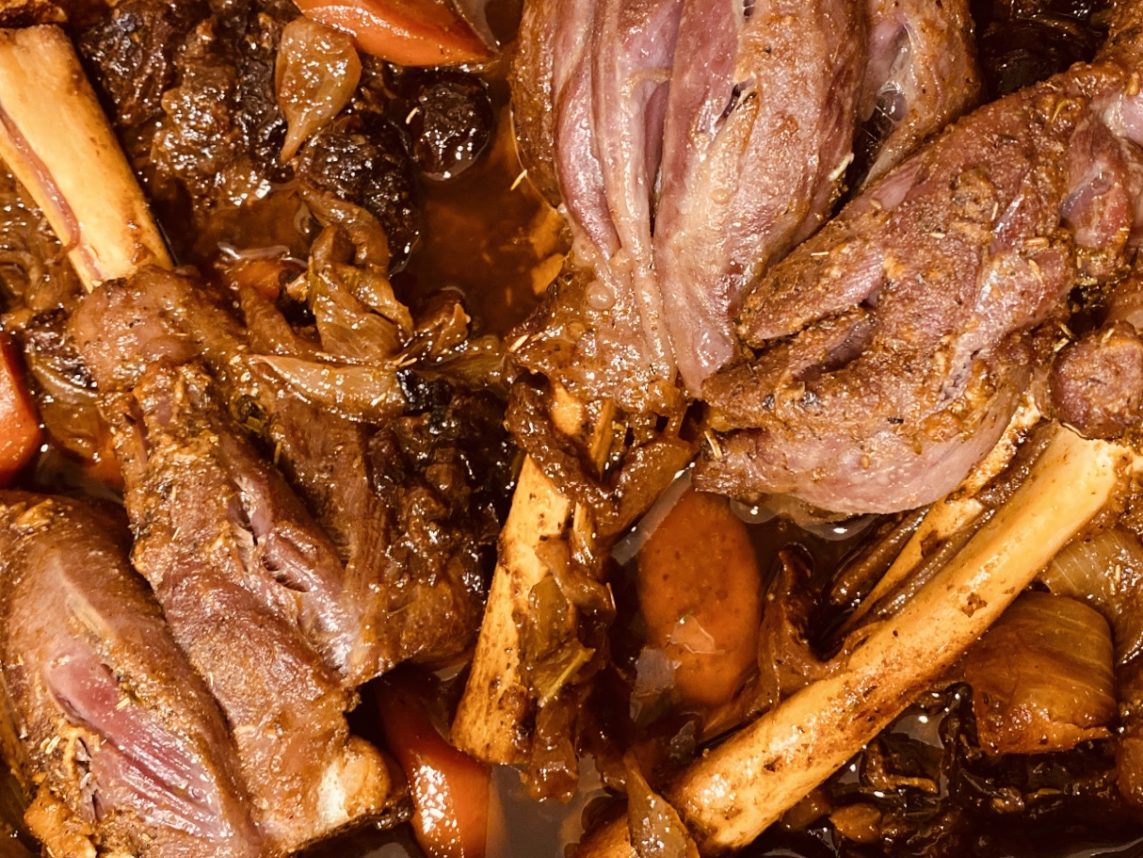
RACHEL’S LAMB SHANKS WITH DRIED FRUITS
4-6 lamb shanks, marinated (recipe follows)
1 large onion, thinly sliced
2 tablespoons olive oil
2 large carrots, sliced into thick rounds
2 stalks celery, sliced thinly
1 cup pitted prunes
1/4 cup dried apricots, chopped
2 cups water
Marinade
1/2 cup olive oil
1 tablespoon cumin
1 tablespoon paprika
2 teaspoons salt
1 tablespoon herbs de Provence
6 garlic cloves, grated
1/2 cup red wine
In large bowl, combine all marinade ingredients and rub on lamb shanks. Marinate for 1 hour.
Preheat oven to 350 F.
In heavy pot or Dutch oven, heat olive oil and sauté sliced onion until it starts to soften.
Add vegetables and dried fruits. Place lamb and all marinade liquid in pot.
Add 2 cups of water, cover and bake 2 hours.
Lamb should fall off the bone. If not, bake for another 15-30 minutes.
Serves 8-10.
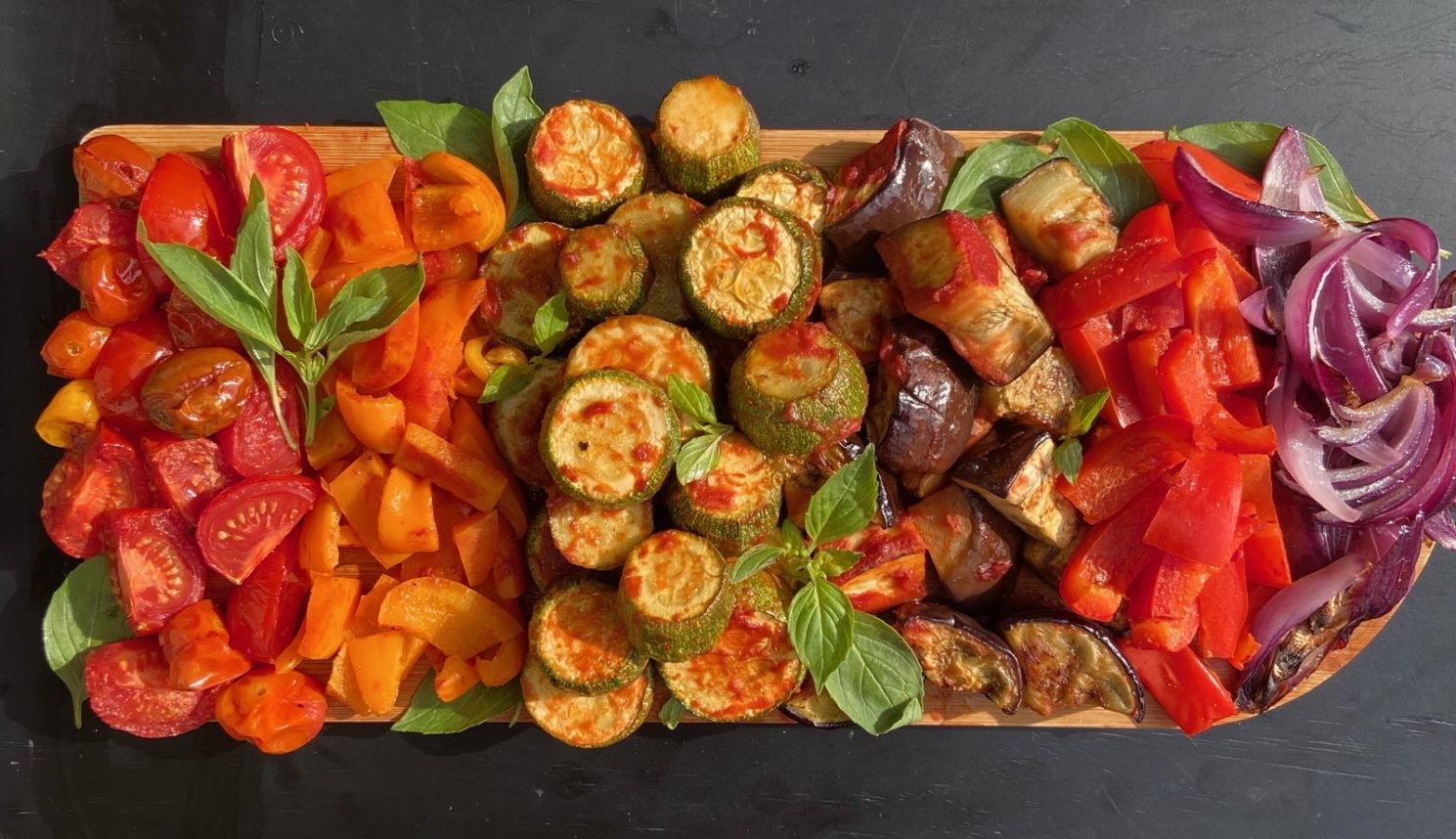
SHARON’S RATATOUILLE
1 large eggplant, cut into 2-inch squares
5 Mexican squash, cut into rings
Olive oil, for drizzling
1 red pepper, cut into 1-inch strips
1 orange pepper, cut into 1-inch strips
6 Campari tomatoes, cut into quarters
1 purple onion, sliced
3/4 cup oil
1 1/2 cups tomato sauce
4 cloves garlic, crushed
1 teaspoon oregano
1 teaspoon smoked paprika
1 teaspoon salt
1/2 teaspoon white pepper
Fresh lemon basil for garnish
Preheat oven to 425.
Arrange eggplant and squash in a single layer on baking tray. Drizzle with oil and roast for 20 minutes.
Arrange peppers, tomatoes and purple onion slices on baking tray, drizzle with oil and roast for 15 minutes.
In small bowl, mix tomato sauce, garlic and spices.
Pour half tomato sauce mixture on the eggplant and squash and the other half over peppers and tomatoes.
Roast all vegetables for 10 more minutes. Serve hot.
Serves 10-12.
RACHEL’S NORTH AFRICAN PASSOVER FAVA BEAN SOUP
3 tablespoons olive oil
2 large leeks, white and pale green parts only, cleaned and sliced
1 large onion, chopped
2 large carrots, peeled and diced
4 stalks celery, chopped
2 medium turnips, peeled and diced
2 large potatoes, peeled and diced
2 cups frozen double-peeled fava beans
2 quarts water, vegetable stock or chicken stock
Salt and white pepper, to taste
1 teaspoon turmeric
1/2 cup fresh cilantro, minced
Heat oil over medium heat in heavy soup pot or Dutch oven.
Add leeks, onion, carrots and celery and cook until tender, about five minutes.
Add the turnips, potatoes, 1 1/2 cups fava beans and liquid and bring to a boil. Cover pot, reduce heat and simmer for 30 minutes until vegetables are tender.
Purée soup with hand masher or immersion blender.
Add salt and pepper, turmeric, chopped cilantro and remaining fava beans.
Simmer over low heat for 30 minutes and stir often.
Garnish with cilantro and a drizzle of olive oil, if desired.
Makes about 12 servings.

SHARON’S CHOCOLATE BARK
30 ounces bittersweet chocolate chips
2 tablespoons safflower oil
1/2 cup raw almonds, roughly chopped
1/2 cup pumpkin seeds
1/2 cup dried cranberries
1/4 teaspoon Himalayan pink salt
Place chocolate in microwave-safe bowl. Pour oil on top and microwave on high for 2 minutes. Stir chocolate with spatula to make sure it is completely melted.
Pour melted chocolate onto parchment-lined, 9×13 tray.
Scatter almonds, seeds and cranberries onto chocolate. Sprinkle with salt. Chill in refrigerator.
Chop into rough pieces.
Makes about 3 dozen pieces.
Rachel Emquies Sheff’s family roots are Spanish Moroccan. Sharon Gomperts’ family hails from Baghdad and El Azair in Iraq. Known as the Sephardic Spice Girls, they have on the Sephardic Educational Center’s projects, SEC Food Group and community cooking classes. Join them on Facebook at SEC FOOD.





















